 W
WAncient Egyptian pottery includes all objects of fired clay from ancient Egypt. First and foremost, ceramics served as household wares for the storage, preparation, transport, and consumption of food, drink, and raw materials. Such items include beer and wine mugs and water jugs, but also bread molds, fire pits, lamps, and stands for holding round vessels, which were all commonly used in the Egyptian household. Other types of pottery served ritual purposes. Ceramics are often found as grave goods.
 W
WEl Argar is an Early Bronze Age culture that was based in Antas, Almería, within modern Spain. It is believed to have been active from about 2200 B.C. to 1500 B.C. The people developed sophisticated pottery and ceramic techniques, which they traded with other Mediterranean tribes.
 W
WBeveled rim bowls are small, undecorated, mass-produced clay bowls most common in the 4th millennium B.C. They constitute roughly three quarters of all ceramics found in Uruk culture sites, are therefore a unique and reliable indicator of the presence of the Uruk culture in ancient Mesopotamia.
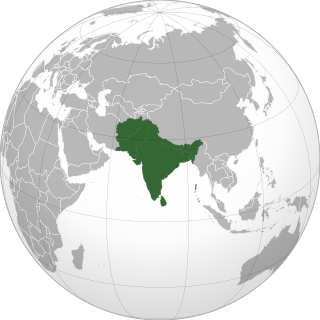 W
WBlack and red ware (BRW) is a South Asian earthenware, associated with the neolithic phase, Harappa, Bronze Age India, Iron Age India, the megalithic and the early historical period. Although it is sometimes called an archaeological culture, the spread in space and time and the differences in style and make are such that the ware must have been made by several cultures.
 W
WThe Bocchoris vase is a ceramic container dating from ancient Egypt. It was found in 1895 in a tomb at Tarquinia, and is now in the National Museum at Tarquinia. The vessel, often also labelled as situla and made of Egyptian faience, bears an inscription with the names of the 24th Dynasty pharaoh Wahkare Bakenrenef who ruled about 720 to 715 BC. It shows the king between the Egyptian goddess Neith and the god Horus in the middle register, on one side and on the other between Horus and Thoth. In the lower register are shown Kushite prisoners between monkeys eating dates from palm trees, a depiction which was considered by Egyptologist Toby Wilkinson as racial propaganda. The vessel is an important evidence for long distance trade in the 9th and 8th century BC. It is furthermore of some importance for dating earlier phases of Etruscan culture in Italy. Because of the good preservation of the vessel, it has been argued that it came very shortly after it was made into the Etruscan tomb.
 W
WChocolate-on-White ware is the description commonly given to an important diagnostic ceramic type of Bronze Age Southern Levant. It is characterized by a white slip and dark-brown or black decorations on it. Often it is also classified as bichrome decorated pottery ware, although it also sometimes comes in monochrome variety.
 W
WComb Ceramic or Pit-Comb Ware, Jeulmun pottery or Jeulmun vessel is a type of pottery subjected to geometric patterns from a comb-like tool. This type of pottery was widely distributed in the Baltic, Finland, the Volga upstream flow, south Siberia, Lake Baikal, Mongolian Plateau, the Liaodong Peninsula and the Korean Peninsula.
 W
WCord-marked pottery or Cordmarked pottery is an early form of a simple earthenware pottery made in precontact villages. It allowed food to be stored and cooked over fire. Cord-marked pottery varied slightly across the world, depending upon the clay and raw materials that were available. It generally coincided with cultures moving to an agrarian and more settled lifestyle, like that of the Woodland period, as compared to a strictly hunter-gatherer lifestyle.
 W
WDark Faced Burnished Ware or DFBW is the earliest form of pottery developed in the western world.
 W
WGrooved ware is the name given to a pottery style of the British Neolithic. Its manufacturers are sometimes known as the Grooved ware people. Unlike the later Beaker ware, Grooved culture was not an import from the continent but seems to have developed in Orkney, early in the 3rd millennium BC, and was soon adopted in Britain and Ireland.
 W
WThe Jeulmun pottery period is an archaeological era in Korean prehistory broadly spanning the period of 8000–1500 BC. This period subsumes the Mesolithic and Neolithic cultural stages in Korea, lasting ca. 8000–3500 BC and 3500–1500 BC, respectively. Because of the early presence of pottery, the entire period has also been subsumed under a broad label of "Korean Neolithic".
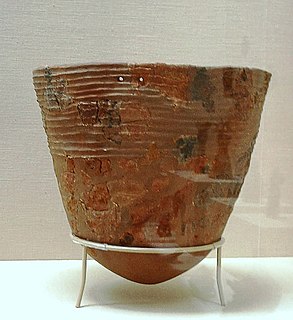 W
WThe Jōmon pottery is a type of ancient earthenware pottery which was made during the Jōmon period in Japan. The term "Jōmon" (縄文) means "rope-patterned" in Japanese, describing the patterns that are pressed into the clay.
 W
WKhabur ware is a specific type of pottery named after the Khabur River region, in northeastern Syria, where large quantities of it were found by the archaeologist Max Mallowan at the site of Chagar Bazar. The pottery's distribution is not confined to the Khabur region, but spreads across northern Iraq and is also found at a few sites in Turkey and Iran.
 W
WKvevri are large earthenware vessels used for the fermentation, storage and ageing of traditional Georgian wine. Resembling large, egg-shaped amphorae without handles, they are either buried below ground or set into the floors of large wine cellars. Kvevris vary in size: volumes range from 20 litres to around 10,000; 800 is typical.
 W
WPottery and ceramics have been produced in the Levant since prehistoric times.
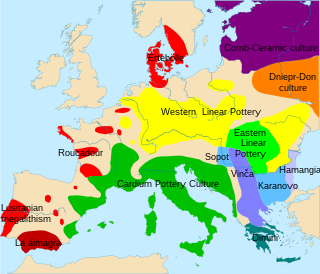 W
WThe Linear Pottery culture is a major archaeological horizon of the European Neolithic, flourishing c. 5500–4500 BC. It is abbreviated as LBK, and is also known as the Linear Band Ware, Linear Ware, Linear Ceramics or Incised Ware culture, and falls within the Danubian I culture of V. Gordon Childe.
 W
WThe Maitum anthropomorphic burial jars are earthenware secondary burial vessels discovered in 1991 by the National Museum of the Philippines' archaeological team in Ayub Cave, Barangay Pinol, Maitum, Sarangani Province, Mindanao, Philippines. The jars are anthropomorphic; characterized by a design that suggests human figures with complete or partial facial features of the first inhabitants of Mindanao. Furthermore, they give emphasis to the Filipinos’ popular belief of life after death.
 W
WMinoan pottery has been used as a tool for dating the mute Minoan civilization. Its restless sequence of quirky maturing artistic styles reveals something of Minoan patrons' pleasure in novelty while they assist archaeologists in assigning relative dates to the strata of their sites. Pots that contained oils and ointments, exported from 18th century BC Crete, have been found at sites through the Aegean islands and mainland Greece, on Cyprus, along coastal Syria and in Egypt, showing the wide trading contacts of the Minoans.
 W
WThe Mumun pottery period is an archaeological era in Korean prehistory that dates to approximately 1500-300 BC This period is named after the Korean name for undecorated or plain cooking and storage vessels that form a large part of the pottery assemblage over the entire length of the period, but especially 850-550 BC.
 W
WThe Nakhchivan rock signs were found in 2016 at Agsal between the villages of Ərəfsə and Milax in the Culfa region.
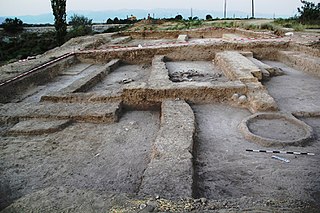 W
WNakhchivan Tepe - an ancient town located within Nakhchivan city, Naxçıvan Autonomous Republic, Azerbaijan. The city is located at the top of a natural hill in the Nakhchivançay valley. The settlement dates at least as far back as 5000 BC.
 W
WThe Ōdai Yamamoto I Site is an Jōmon archaeological site in the town of Sotogahama, Aomori Prefecture, in the Tōhoku region of northern Japan. Excavations in 1998 uncovered forty-six earthenware fragments which have been dated as early as 14,500 BC ; this places them among the earliest pottery currently known. As the earliest in Japan, this marks the transition from the Japanese Paleolithic to Incipient Jōmon. Other pottery of a similar date has been found at Gasya and Khummi on the lower Amur River. Such a date puts the development of pottery before the warming at the end of the Pleistocene.
 W
WOsmantəpə is an early Neolithic settlement near Kükü village in the Şahbuz district in the Nakhchivan Autonomous Republic.
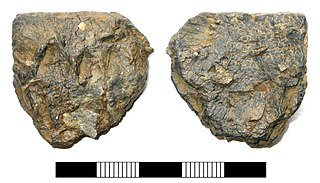 W
WPeterborough ware is a decorated pottery style of the early to middle Neolithic. Named after the region of Middlesex and East Anglia, England where the style was first discovered, it is known for the impressed pits made by bone or wood implements in its sides. Whipped cord was also used to make circular 'maggot' patterns.
 W
WThe Phaistos Disc is a disk of fired clay from the Minoan palace of Phaistos on the island of Crete, possibly dating to the middle or late Minoan Bronze Age. The disk is about 15 cm (5.9 in) in diameter and covered on both sides with a spiral of stamped symbols. Its purpose and its original place of manufacture remain disputed. It is now on display at the archaeological museum of Heraklion.
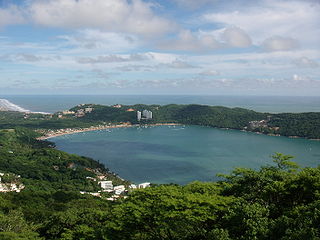 W
WPuerto Marqués is a bay located on the Pacific Coast in the Mexican State of Guerrero. Approximately 10 kilometers south of the city of Acapulco, it is the second closest Pacific port to Mexico City, approximately three hundred kilometres southwest, just north of the Isthmus of Tehuantepec. It has two main beaches for tourists and locals, Puerto Marqués Beach and Majahua Beach.
 W
WTell el-Yahudiyeh Ware or Tell el-Yahudiya ware is a distinctive ceramic ware of the late Middle Bronze Age / Second Intermediate Period. The ware takes its name from its type site at Tell el-Yahudiyeh in the eastern Nile Delta of ancient Egypt, and is also found in a large number of Levantine and Cypriot sites. It was first recognised as a distinctive ware by Sir Flinders Petrie during his excavation of the type site.
 W
WUzun Oba is an archaeological excavation site in Azerbaijan. It is located on the right bank of the Nakhchivançay near the village of Aşağı Uzunoba in the Babək district.
 W
WThe Venus of Dolní Věstonice is a Venus figurine, a ceramic statuette of a nude female figure dated to 29,000–25,000 BCE. It was found at the Paleolithic site Dolní Věstonice in the Moravian basin south of Brno, in the base of Děvín Mountain, 549 metres (1,801 ft). This figurine and a few others from locations nearby are the oldest known ceramic articles in the world.
 W
W"William", also known as "William the Hippo", is an Egyptian faience hippopotamus statuette from the Middle Kingdom, now in the collection of the Metropolitan Museum of Art in New York City, where it serves as an informal mascot of the museum. Found in a shaft associated with the Upper Egyptian tomb chapel of "The Steward, Senbi", in what is now Meir, William dates from c. 1961 BC – c. 1878 BC, during the reigns of Senusret I and Senusret II. This 20 cm figurine in Egyptian faience, a clay-less material, has become popular not only for his endearing appearance, but also because his defining characteristics illustrate many of the most salient facets of craft production in ancient Egypt during this time.